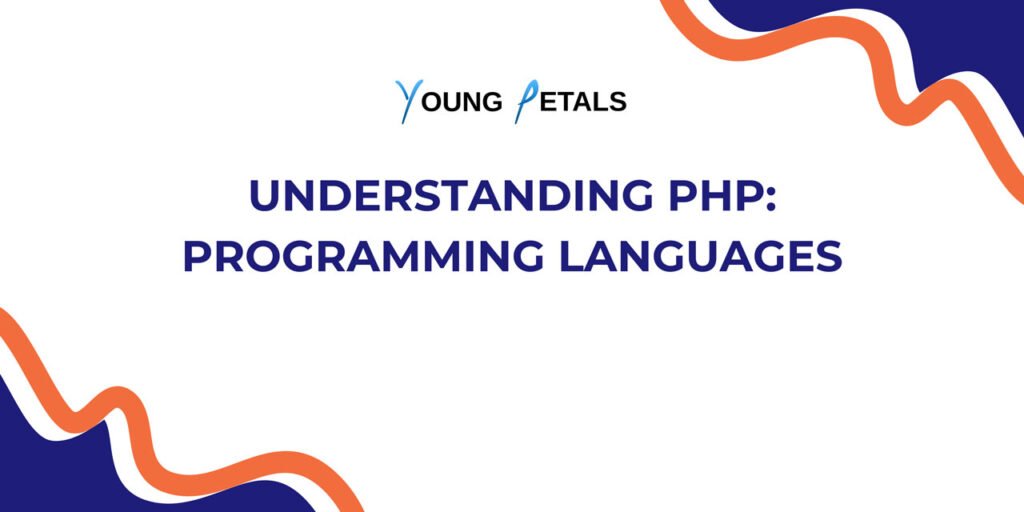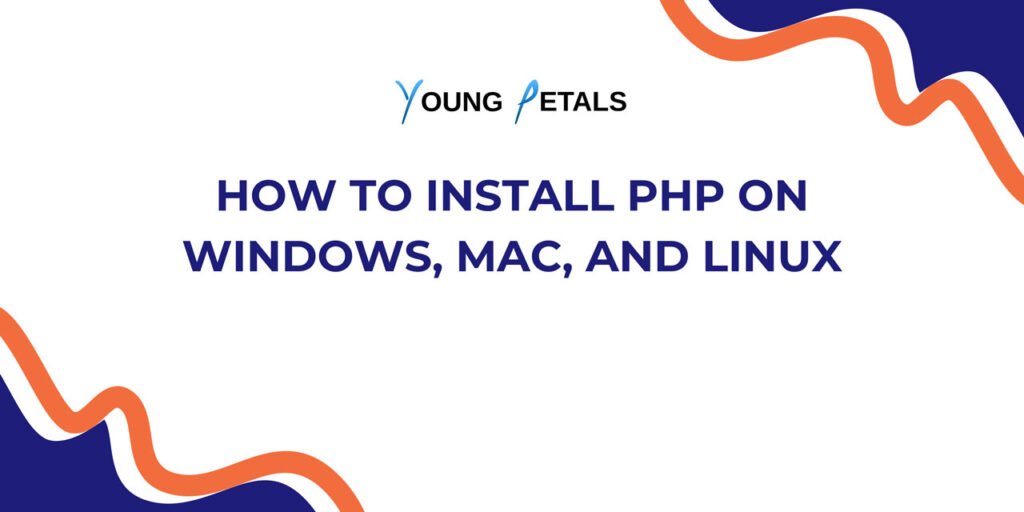When embarking on a PHP development project, choosing the right framework can make or break your application’s success. Two frameworks that consistently appear in developer discussions are Laravel and CodeIgniter. Both have passionate communities and proven track records, but they serve different needs and philosophies in web development.
This comprehensive guide will walk you through the key differences between Laravel and CodeIgniter, helping you make an informed decision based on your project requirements, team expertise, and long-term goals.
Understanding PHP Frameworks: The Foundation
Before diving into the comparison, let’s establish what makes a PHP framework valuable. A framework provides a structured foundation for building web applications, offering pre-written code, libraries, and conventions that accelerate development while maintaining code quality and security standards.
Think of a framework like a blueprint for building a house. Instead of laying every brick from scratch, you have a proven structure that handles the foundation, plumbing, and electrical work, allowing you to focus on the unique aspects of your project.
Laravel: The Artisan’s Framework
Laravel emerged in 2011 as a modern PHP framework designed to make web development enjoyable and efficient. Created by Taylor Otwell, Laravel emphasizes elegant syntax, developer happiness, and rapid application development.
Core Philosophy and Architecture
Laravel follows the Model-View-Controller (MVC) architectural pattern but extends beyond basic MVC with a rich ecosystem of tools and features. The framework embraces modern PHP practices, including namespaces, traits, and dependency injection.
<?php
// Example of a Laravel Controller demonstrating clean, expressive syntax
namespace App\Http\Controllers;
use App\Models\User;
use Illuminate\Http\Request;
class UserController extends Controller
{
// This method shows Laravel's eloquent ORM in action
public function index()
{
// Notice how readable and intuitive this database query is
$users = User::with('posts')
->where('status', 'active')
->orderBy('created_at', 'desc')
->paginate(10);
return view('users.index', compact('users'));
}
// Demonstrating form validation and data processing
public function store(Request $request)
{
// Laravel's built-in validation makes data handling secure and simple
$validated = $request->validate([
'name' => 'required|string|max:255',
'email' => 'required|email|unique:users',
'password' => 'required|min:8|confirmed'
]);
// Mass assignment protection is built-in
$user = User::create($validated);
return redirect()->route('users.show', $user)
->with('success', 'User created successfully!');
}
}
Key Laravel Features
Laravel’s feature set reads like a wish list for modern web developers. The Eloquent ORM transforms database interactions into intuitive object relationships, making complex queries feel natural and readable.
The Artisan command-line interface serves as your development assistant, generating boilerplate code, running migrations, and managing your application’s lifecycle. Database migrations allow you to version-control your database schema, making team collaboration seamless.
<?php
// Laravel Migration Example - Version controlling your database structure
use Illuminate\Database\Migrations\Migration;
use Illuminate\Database\Schema\Blueprint;
use Illuminate\Support\Facades\Schema;
class CreatePostsTable extends Migration
{
public function up()
{
// This migration creates a posts table with proper relationships
Schema::create('posts', function (Blueprint $table) {
$table->id(); // Auto-incrementing primary key
$table->string('title');
$table->text('content');
$table->string('slug')->unique();
$table->foreignId('user_id')->constrained(); // Foreign key with constraint
$table->enum('status', ['draft', 'published', 'archived'])->default('draft');
$table->timestamp('published_at')->nullable();
$table->timestamps(); // created_at and updated_at columns
});
}
// The down method allows you to rollback changes
public function down()
{
Schema::dropIfExists('posts');
}
}
Laravel’s built-in authentication system provides a complete user management solution out of the box, including registration, login, password reset, and email verification. The framework also includes robust security features like CSRF protection, SQL injection prevention, and XSS protection by default.
CodeIgniter: The Pragmatic Choice
CodeIgniter, originally released in 2006, represents a different philosophy in PHP framework design. It prioritizes simplicity, small footprint, and ease of learning, making it an excellent choice for beginners and projects requiring minimal overhead.
Core Philosophy and Architecture
CodeIgniter follows a loose interpretation of the MVC pattern, giving developers flexibility in how they structure their applications. The framework emphasizes convention over configuration but doesn’t enforce strict architectural patterns.
<?php
// CodeIgniter Controller Example - Notice the straightforward approach
defined('BASEPATH') OR exit('No direct script access allowed');
class Users extends CI_Controller {
public function __construct()
{
parent::__construct();
// Loading models and libraries as needed
$this->load->model('user_model');
$this->load->library('form_validation');
}
public function index()
{
// Direct and simple database interaction
$data['users'] = $this->user_model->get_active_users();
// Loading views with data
$this->load->view('templates/header');
$this->load->view('users/index', $data);
$this->load->view('templates/footer');
}
public function create()
{
// CodeIgniter's validation approach is explicit and clear
$this->form_validation->set_rules('name', 'Name', 'required|min_length[3]|max_length[50]');
$this->form_validation->set_rules('email', 'Email', 'required|valid_email|is_unique[users.email]');
$this->form_validation->set_rules('password', 'Password', 'required|min_length[8]');
if ($this->form_validation->run() === FALSE) {
// Show form with validation errors
$this->load->view('users/create');
} else {
// Process the form data
$user_data = array(
'name' => $this->input->post('name'),
'email' => $this->input->post('email'),
'password' => password_hash($this->input->post('password'), PASSWORD_DEFAULT)
);
if ($this->user_model->create_user($user_data)) {
redirect('users');
}
}
}
}
Key CodeIgniter Features
CodeIgniter’s strength lies in its straightforward approach to web development. The framework provides essential tools without overwhelming complexity, making it particularly suitable for developers who prefer explicit control over their application’s behavior.
The database abstraction layer offers a simple yet powerful way to interact with databases, supporting multiple database systems with consistent syntax. While not as feature-rich as Laravel’s Eloquent, CodeIgniter’s Active Record implementation covers most common database operations effectively.
<?php
// CodeIgniter Model Example - Simple and direct database operations
class User_model extends CI_Model {
public function __construct()
{
parent::__construct();
}
// Straightforward method to get active users with pagination
public function get_active_users($limit = 10, $offset = 0)
{
// CodeIgniter's query builder is intuitive and secure
return $this->db->select('id, name, email, created_at')
->from('users')
->where('status', 'active')
->order_by('created_at', 'DESC')
->limit($limit, $offset)
->get()
->result_array();
}
// Method demonstrating transaction handling
public function create_user_with_profile($user_data, $profile_data)
{
// Manual transaction control gives you complete control
$this->db->trans_start();
$this->db->insert('users', $user_data);
$user_id = $this->db->insert_id();
$profile_data['user_id'] = $user_id;
$this->db->insert('user_profiles', $profile_data);
$this->db->trans_complete();
return $this->db->trans_status();
}
}
Performance and Scalability Analysis
Understanding how each framework handles performance and scalability requirements is crucial for making an informed decision.
Laravel Performance Considerations
Laravel’s rich feature set comes with performance implications that developers must understand and address. The framework loads numerous components by default, which can impact initial response times. However, Laravel provides several optimization strategies to mitigate these concerns.
<?php
// Laravel performance optimization example using caching
use Illuminate\Support\Facades\Cache;
class PostController extends Controller
{
public function index()
{
// Caching expensive database queries improves performance
$posts = Cache::remember('popular_posts', 3600, function () {
return Post::with(['author', 'categories'])
->where('status', 'published')
->where('views', '>', 1000)
->orderBy('created_at', 'desc')
->take(20)
->get();
});
return view('posts.index', compact('posts'));
}
}
Laravel’s Eloquent ORM, while developer-friendly, can generate inefficient queries if not used carefully. The framework provides tools like query optimization, eager loading, and caching to address these challenges, but developers need to be aware of potential performance bottlenecks.
CodeIgniter Performance Profile
CodeIgniter’s lightweight architecture typically results in faster initial load times and lower memory consumption. The framework’s minimal overhead makes it particularly suitable for applications where raw performance is a primary concern.
<?php
// CodeIgniter performance-focused approach
class Dashboard extends CI_Controller {
public function index()
{
// Direct database query for maximum performance
$query = $this->db->query("
SELECT p.title, p.views, u.name as author
FROM posts p
JOIN users u ON p.user_id = u.id
WHERE p.status = 'published'
ORDER BY p.views DESC
LIMIT 10
");
$data['popular_posts'] = $query->result_array();
// Minimal view loading for fast rendering
$this->load->view('dashboard', $data);
}
}
Learning Curve and Developer Experience
The learning experience differs significantly between these frameworks, affecting team onboarding and development velocity.
Laravel’s Learning Journey
Laravel requires understanding modern PHP concepts and conventions. Developers need to grasp dependency injection, service containers, and the framework’s “magic” methods. While this creates a steeper initial learning curve, it pays dividends in long-term productivity and code maintainability.
<?php
// Laravel demonstrates advanced concepts like dependency injection
class OrderController extends Controller
{
// The framework automatically injects dependencies
public function __construct(
private OrderService $orderService,
private PaymentGateway $paymentGateway,
private NotificationService $notificationService
) {}
public function store(Request $request)
{
// Service layer pattern keeps controllers thin and focused
try {
$order = $this->orderService->create($request->validated());
$payment = $this->paymentGateway->process($order);
$this->notificationService->sendConfirmation($order);
return response()->json(['order' => $order], 201);
} catch (PaymentException $e) {
return response()->json(['error' => 'Payment failed'], 422);
}
}
}
CodeIgniter’s Accessibility
CodeIgniter’s gentle learning curve makes it accessible to developers transitioning from procedural PHP or those new to framework-based development. The explicit nature of most operations means fewer surprises and easier debugging for beginners.
Community and Ecosystem Comparison
The community surrounding a framework significantly impacts its long-term viability and your development experience.
Laravel boasts one of the most vibrant PHP communities, with extensive documentation, video tutorials, podcasts, and conferences. The Laravel ecosystem includes tools like Laravel Forge for server management, Laravel Nova for administration panels, and Laravel Spark for SaaS applications.
CodeIgniter maintains a stable community focused on simplicity and backward compatibility. While smaller than Laravel’s community, it provides reliable support and maintains extensive documentation that emphasizes clarity over comprehensiveness.
Security Features and Best Practices
Security considerations vary between the frameworks, with different approaches to protecting applications from common vulnerabilities.
<?php
// Laravel's built-in security features example
class SecureController extends Controller
{
public function updateProfile(Request $request)
{
// CSRF protection is automatic in Laravel
// Mass assignment protection through fillable properties
$user = Auth::user();
$validated = $request->validate([
'name' => 'required|string|max:255',
'email' => 'required|email|unique:users,email,' . $user->id,
]);
// XSS protection through automatic escaping in views
$user->update($validated);
return redirect()->back()->with('success', 'Profile updated!');
}
}
Laravel includes comprehensive security features by default, including CSRF protection, SQL injection prevention, and XSS protection. The framework follows security best practices automatically, reducing the chance of developer-introduced vulnerabilities.
CodeIgniter provides security tools but requires more manual implementation of security measures, giving developers explicit control over security implementations while requiring more security awareness.
When to Choose Laravel
Laravel excels in scenarios requiring rapid development, complex applications, or teams familiar with modern PHP practices. Consider Laravel when building content management systems, e-commerce platforms, API-driven applications, or projects requiring extensive third-party integrations.
The framework’s conventions and tooling make it particularly suitable for teams working on multiple projects, where consistent structure and extensive documentation accelerate development cycles.
When to Choose CodeIgniter
CodeIgniter serves well in projects prioritizing simplicity, performance, or teams with varying PHP experience levels. It’s excellent for small to medium-sized applications, legacy system migrations, or situations where hosting resources are limited.
The framework’s minimal requirements and straightforward deployment make it ideal for shared hosting environments or projects with strict performance requirements.
Migration Considerations
Understanding the effort required to migrate between frameworks or upgrade within the same framework helps with long-term planning.
Laravel’s regular release cycle introduces new features but may require more frequent updates to maintain security and compatibility. The framework provides comprehensive upgrade guides and automated tools to assist with migrations.
CodeIgniter’s focus on backward compatibility means fewer breaking changes between versions, making upgrades generally smoother but potentially limiting access to modern PHP features.
Making Your Decision
Your choice between Laravel and CodeIgniter should align with your project requirements, team capabilities, and long-term goals. Consider Laravel for complex applications requiring modern features and rapid development. Choose CodeIgniter for straightforward projects prioritizing simplicity and performance.
Evaluate your team’s PHP experience level, hosting requirements, and project timeline when making this decision. Both frameworks can build excellent applications when chosen appropriately for the context.
Remember that the best framework is the one that enables your team to deliver quality software efficiently and maintainably. Consider prototyping small features in both frameworks to get a feel for their development experience before committing to a full project.
Frequently Asked Questions
Which framework is better for beginners: Laravel or CodeIgniter?
CodeIgniter typically offers a gentler introduction to PHP frameworks due to its straightforward approach and minimal configuration requirements. The framework’s explicit nature makes it easier to understand what’s happening behind the scenes, which helps beginners learn fundamental web development concepts. However, Laravel’s comprehensive documentation and large community provide extensive learning resources that can benefit motivated beginners willing to invest time in understanding modern PHP practices.
Can I use Laravel and CodeIgniter together in the same project?
While technically possible through careful namespace management and separate entry points, combining Laravel and CodeIgniter in the same project is generally not recommended. Each framework has distinct architectural patterns, dependency management systems, and conventions that can create conflicts and maintenance challenges. If you need to integrate existing CodeIgniter code with a new Laravel application, consider gradually migrating components or creating API bridges between separate applications.
Which framework performs better under high traffic conditions?
Performance depends heavily on implementation quality rather than framework choice alone. CodeIgniter’s lightweight architecture typically provides faster initial response times and lower memory usage, making it suitable for high-traffic scenarios with limited resources. Laravel can achieve excellent performance through proper optimization techniques including caching, database query optimization, and using tools like Laravel Octane for enhanced performance. The choice should consider your team’s ability to implement performance optimizations effectively.
How do the job markets compare for Laravel vs CodeIgniter developers?
Laravel currently dominates the PHP framework job market, with significantly more job postings and generally higher salary expectations. The framework’s popularity in modern web development and its adoption by many agencies and startups creates strong demand for Laravel developers. CodeIgniter opportunities exist but are typically in maintenance roles or organizations with existing CodeIgniter applications. Learning Laravel may provide broader career opportunities in the current market.
Which framework is more suitable for API development?
Laravel excels in API development with built-in features like API resources, rate limiting, authentication scaffolding, and comprehensive testing tools. The framework’s ecosystem includes Laravel Passport for OAuth2 implementation and Laravel Sanctum for simple token-based authentication. CodeIgniter can certainly build APIs, but requires more manual implementation of features that Laravel provides out of the box. For complex API requirements or API-first applications, Laravel typically offers more robust tooling.
How do the database features compare between Laravel and CodeIgniter?
Laravel’s Eloquent ORM provides a more sophisticated approach to database interactions with features like model relationships, query scopes, and automatic timestamp handling. The migration system allows version-controlled database schema management, which is particularly valuable for team development. CodeIgniter’s Active Record implementation offers simpler database interactions with manual control over queries and relationships. Choose Laravel if you prefer ORM abstraction and automated database management, or CodeIgniter if you prefer direct control over database operations.
Which framework receives better long-term support and updates?
Laravel follows a regular release schedule with long-term support versions available, providing predictable update cycles and extended security maintenance. The framework’s active development means regular feature additions but may require more frequent updates. CodeIgniter releases updates less frequently but maintains strong backward compatibility, reducing upgrade complexity. Both frameworks provide security updates, but Laravel’s larger community typically identifies and addresses security issues more quickly.
Can these frameworks handle large-scale enterprise applications?
Both frameworks can support large-scale applications with proper architecture and implementation. Laravel’s service container, event system, and queue management make it well-suited for complex enterprise requirements. The framework’s testing tools and package ecosystem support large-scale development practices. CodeIgniter can handle enterprise applications but may require more custom development for advanced features. The choice often depends on your organization’s existing PHP expertise and architectural preferences rather than framework limitations.




